We know very little about Herri met de Bles. He was one of the earliest landscape painters in the southern Netherlands, and mainly worked in Antwerp, but he didn’t sign or date his work. His paintings often include a small owl.

According to 17th century biographer Karel van Mander, the Dutch nickname Herri met de Bles (“Herri with the blaze”) referred to the white streak (or ‘blaze’) in the artist’s hair; his actual name is unknown.1
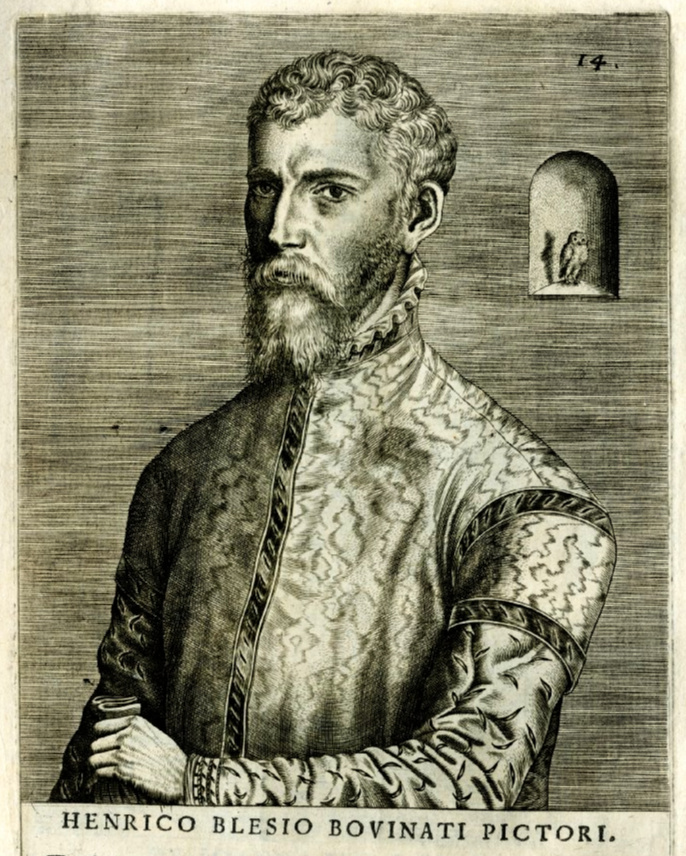 Herri met de Bles
Herri met de Bles
Source: British Museum (CC BY-NC-SA 4.0)
The artist painted dozens of imaginary, meticulously detailed landscapes. They usually included a biblical scene in the foreground, but a few featured themes like mining.
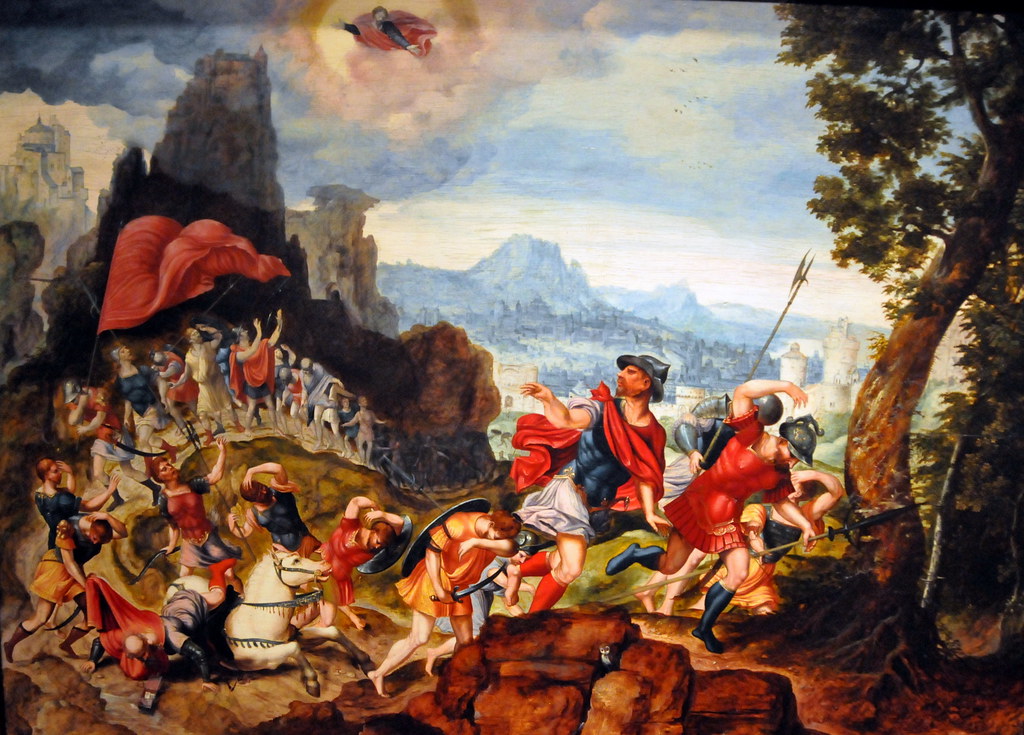
Landscape with the Conversion of Saul on the Road to Damascus (c. 1545), 45.7 cm x 59.1 cm, Allen Memorial Art Museum,
Oberlin College, Oberlin, Massachusetts
Art historian Michel Weemans noted that the painter had “a repertoire of about ten clearly identifiable elements: he combines a celestial apparition within a halo, a fort atop a rocky peak, a mill, a spring flowing from rocks, a leafy tree opposite a dead tree, a rocky arch, a blind man guided by a child, and pilgrims, to which one can add the painter’s emblematic owl.”2
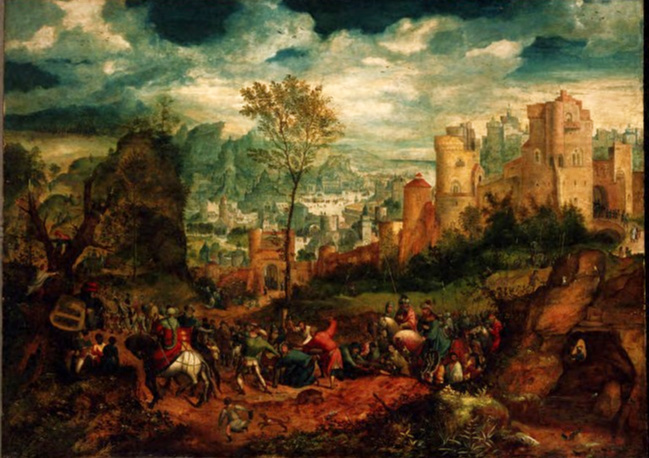 Road to Calvary (c. 1535), 82.6 cm x 114.3 cm, Princeton University Art Gallery, Princeton, New Jersey
Road to Calvary (c. 1535), 82.6 cm x 114.3 cm, Princeton University Art Gallery, Princeton, New Jersey
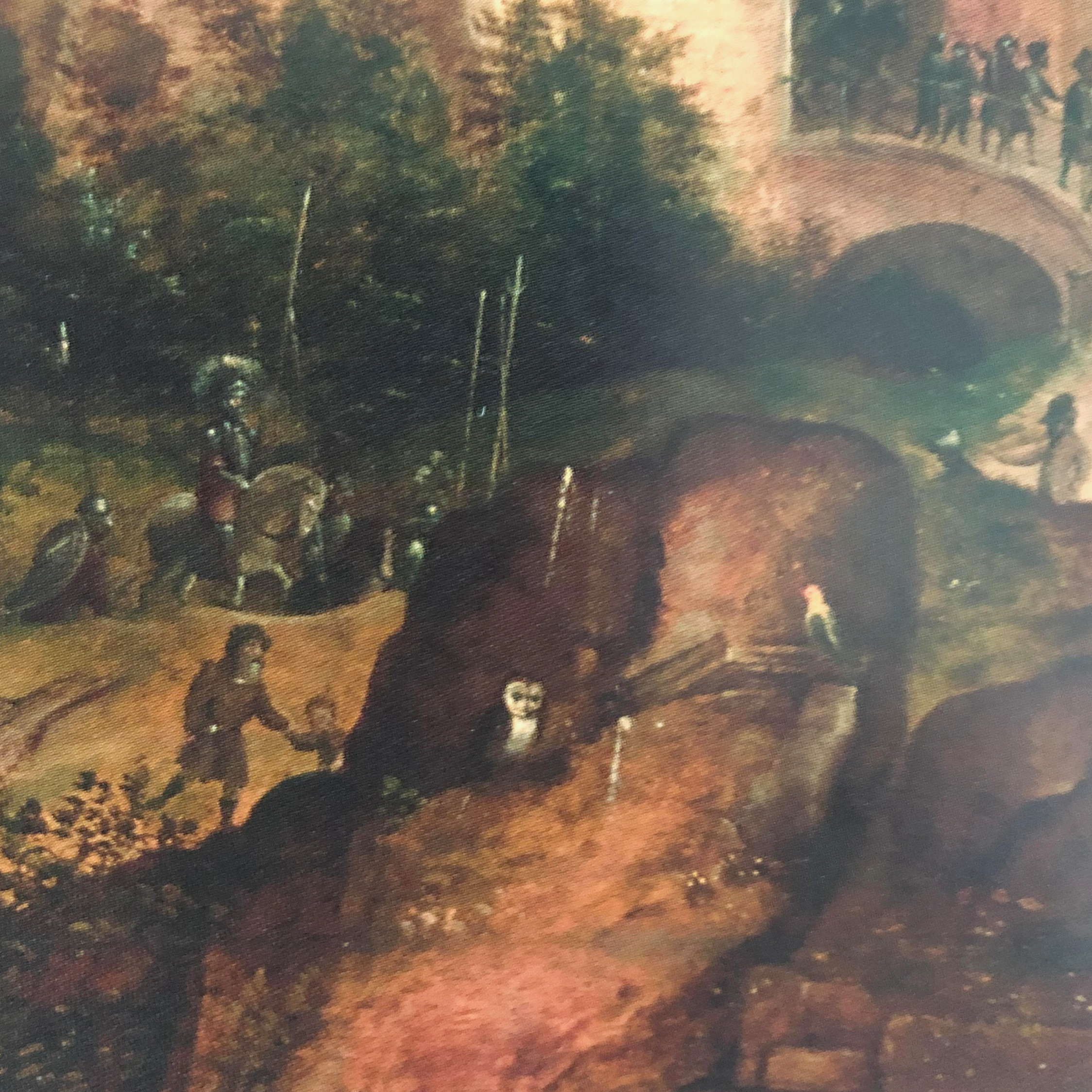
Often the owl is easily visible, or can be spotted after a few minutes of hunting. In other paintings the bird is so small that a viewer would need a magnifying glass to see it.
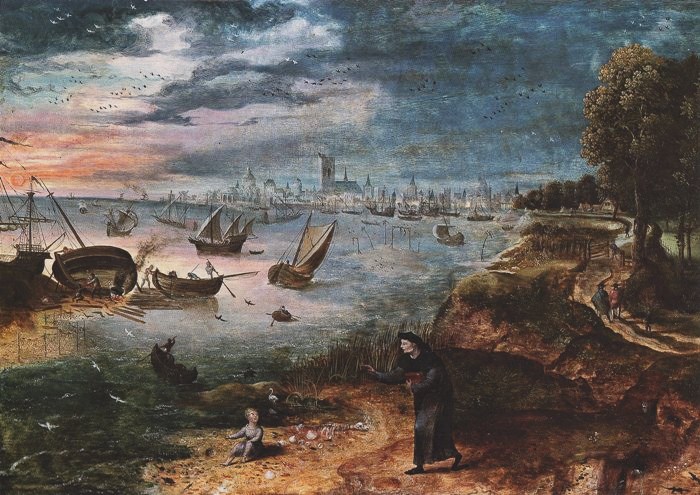 Coastal Landscape with St. Augustine (date unknown), 21.5 cm x 30.6 cm, Palazzo Colonna, Rome
Coastal Landscape with St. Augustine (date unknown), 21.5 cm x 30.6 cm, Palazzo Colonna, Rome
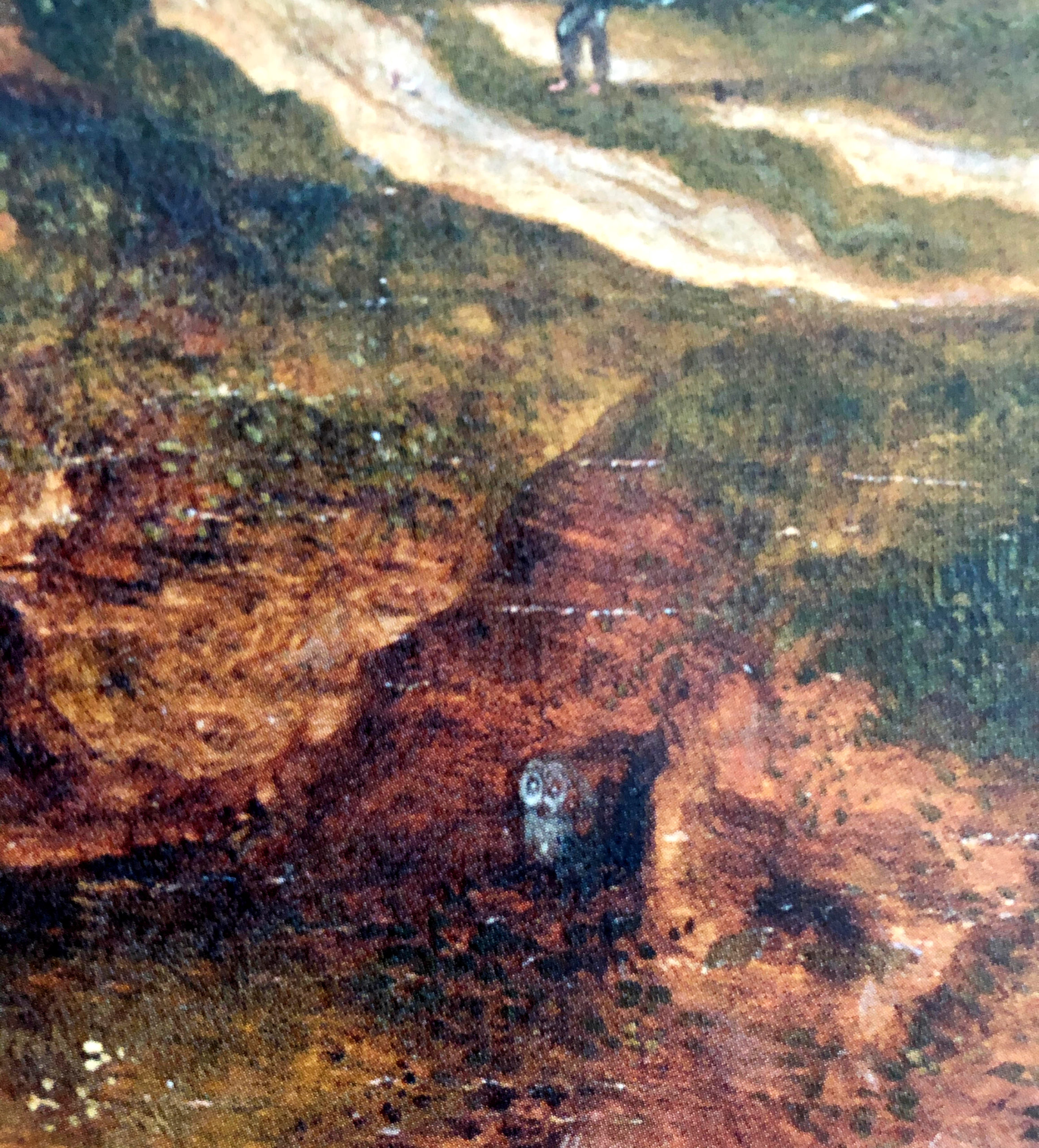
In his 1604 book, Karel Van Mander observed, “[The owl] is sometimes so hidden away that people allow each other a lot of time to look for it wagering that they will not find it anyway and thus pass their time, looking for the owl.”3 In Italy, where Bles’s work was popular, he was also known as ‘Il Civetta’ (the owl).
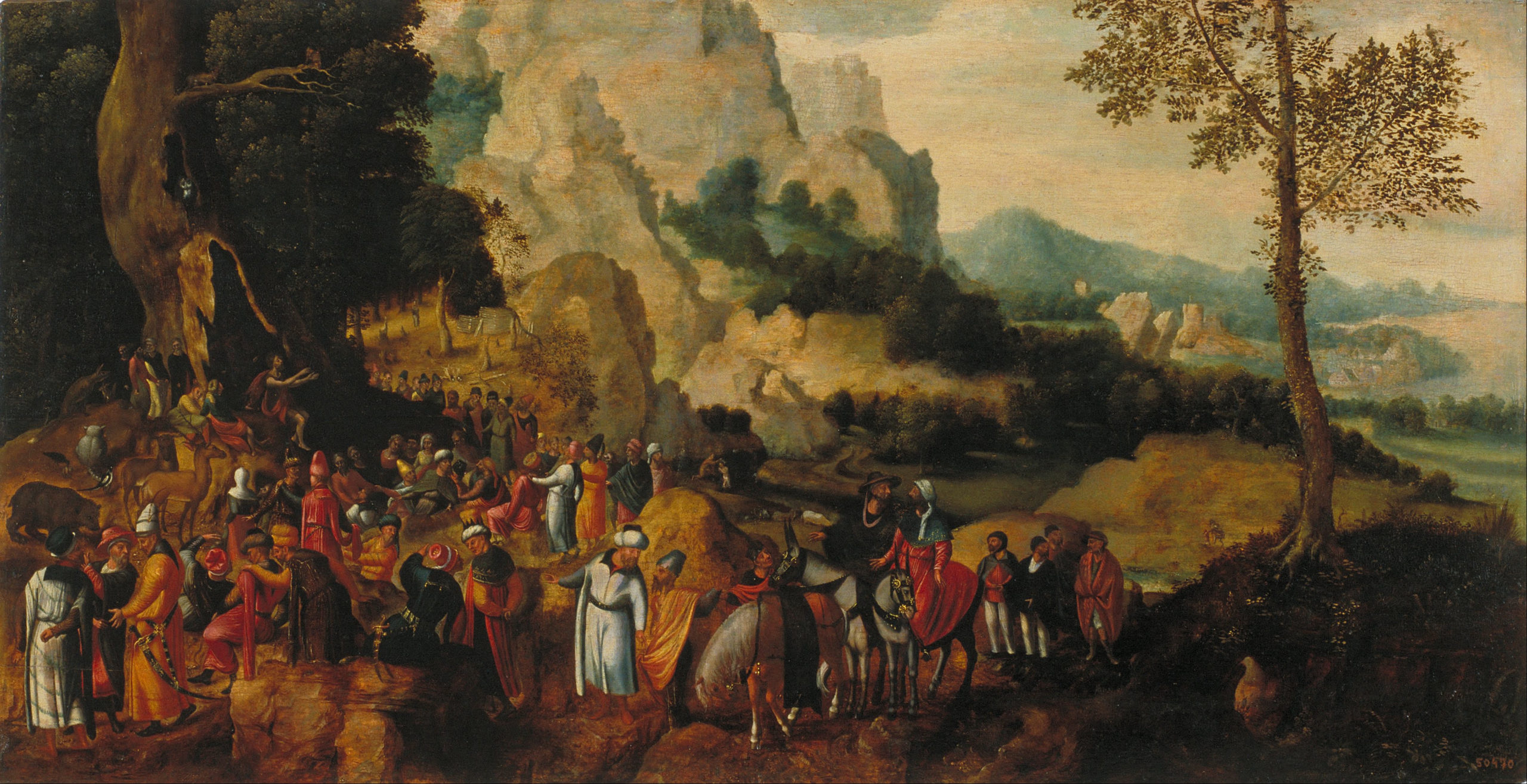 The Preaching of John the Baptist (53 cm x 102 cm), Museu Nacional d’Art de Catalunya, Barcelona
The Preaching of John the Baptist (53 cm x 102 cm), Museu Nacional d’Art de Catalunya, Barcelona
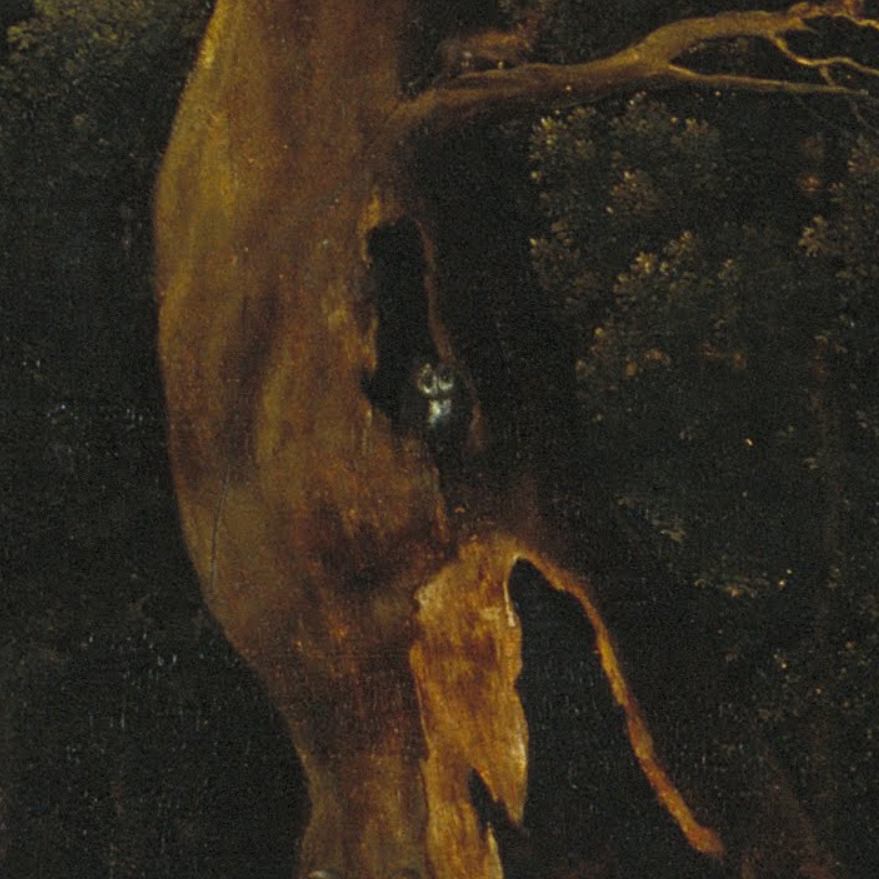
The tiny dramas and other intriguing details in the backgrounds of many of his works enhanced Bles’s appeal. As art historian Betsy Rosasco wrote, “Like the search for the owl (Bles’s signature), which has a gamelike quality, the attempt to recognize the miniature scenes reduces even the most sophisticated viewer to childlike simplicity, and inspires wonder and delight when successfully accomplished.”4
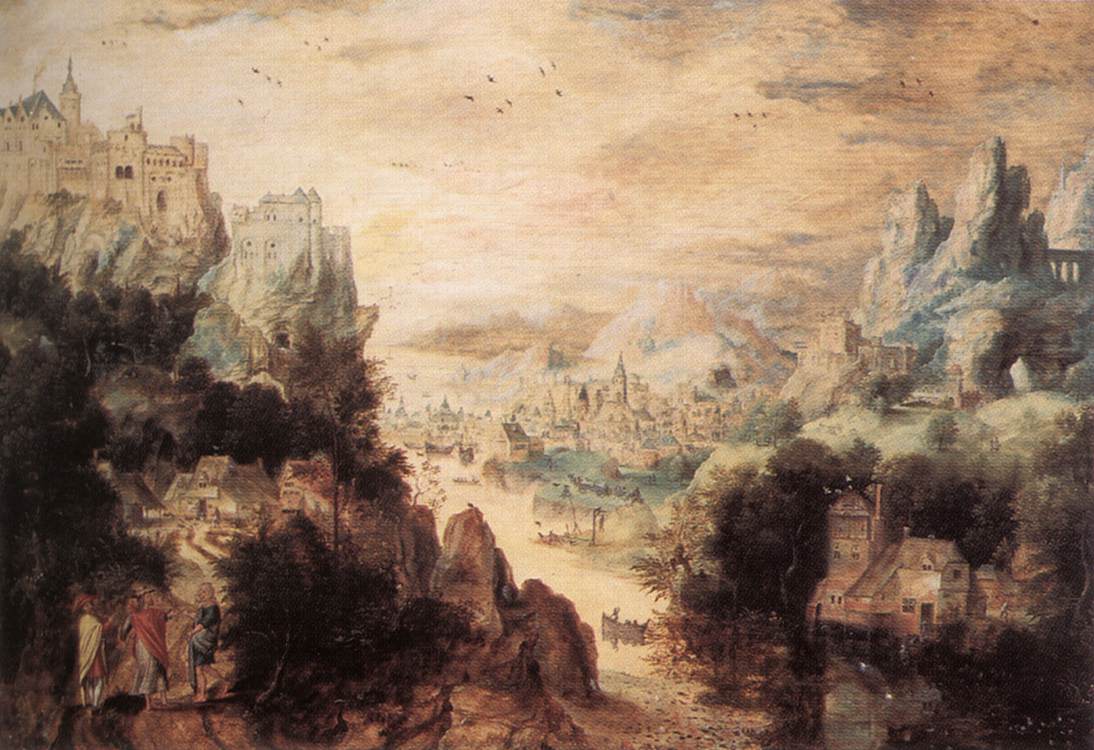 Landscape with Christ and the Pilgrims of Emmaus (34.1 cm x 50.5 cm), Museum Mayer Van den Brugh, Antwerp
Landscape with Christ and the Pilgrims of Emmaus (34.1 cm x 50.5 cm), Museum Mayer Van den Brugh, Antwerp
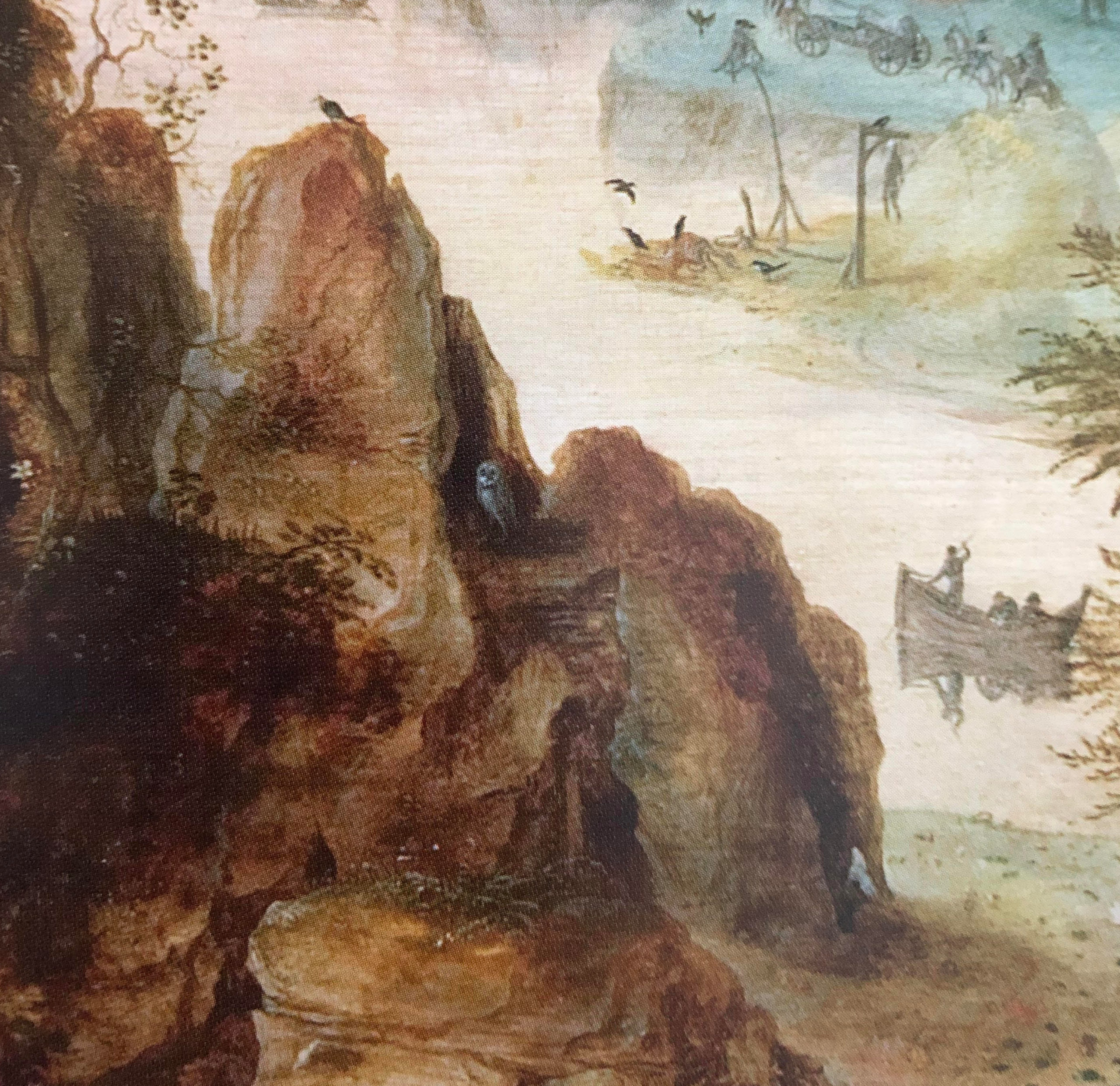
We don’t know why he chose an owl as a signature motif. Some experts have noted that during the 16th century, owls were signs of calamity or doom.5
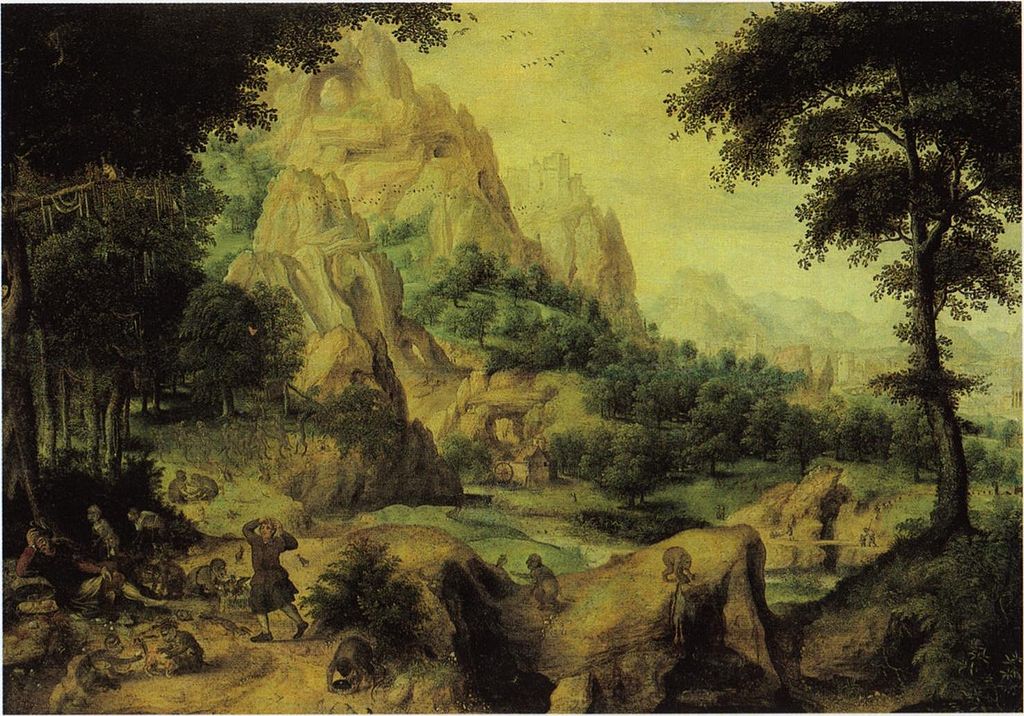 Sleeping Peddler Robbed by Monkeys (59.5 cm x 85.5 cm), Staatliche Kunstsammlungen, Gemäldegalerie, Dresden, Germany
Sleeping Peddler Robbed by Monkeys (59.5 cm x 85.5 cm), Staatliche Kunstsammlungen, Gemäldegalerie, Dresden, Germany
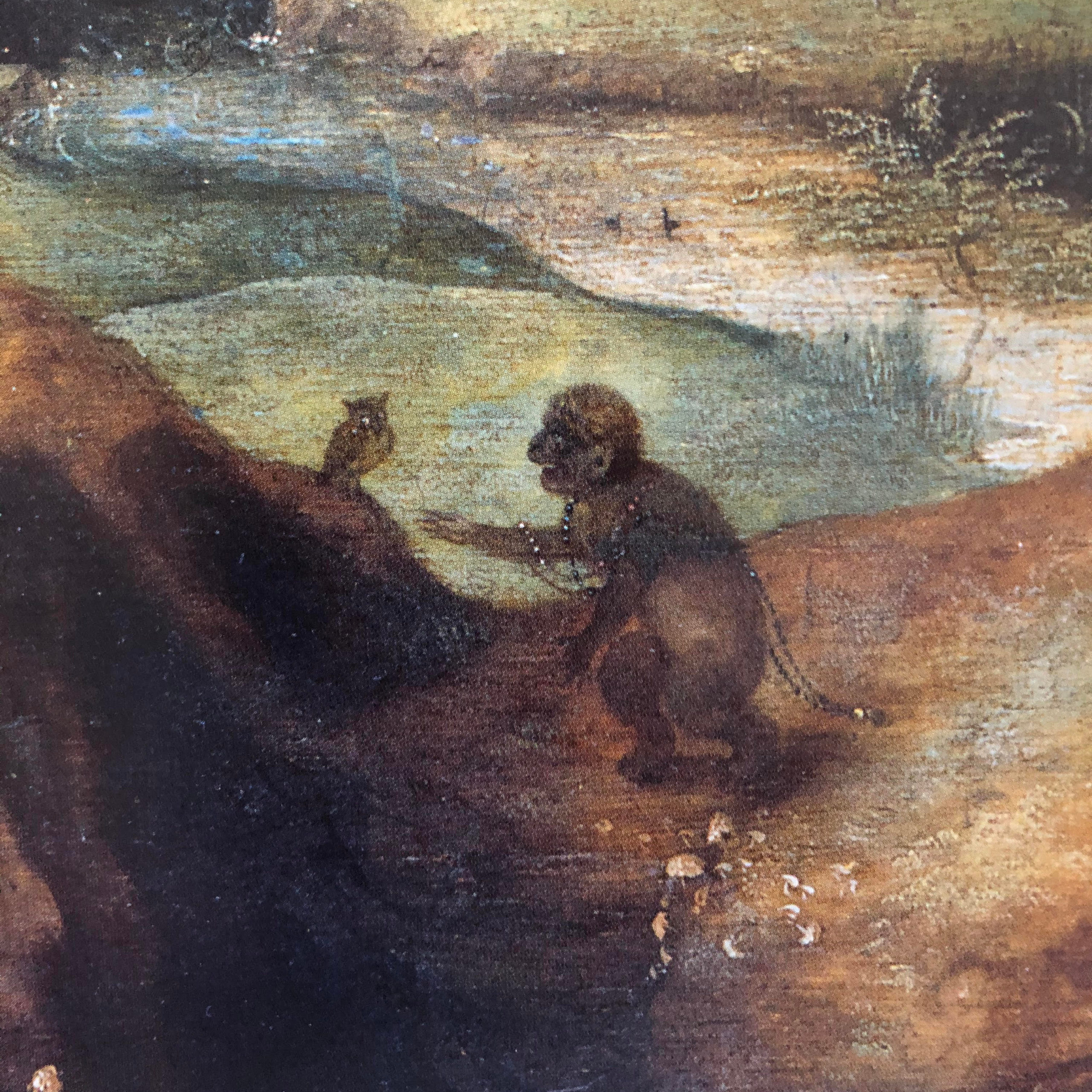
Michel Weemans offered a thoughtful analysis in his beautiful book on Bles.
He summarized the positive and negative connotations attached to owls at that time, and concluded that the owl’s most important role is to symbolize “the difficulty or the inability of the human spirit to perceive the light of divine truth that is concealed beyond surface appearances – and the command to understand ‘the saints’ divine teachings’.”6
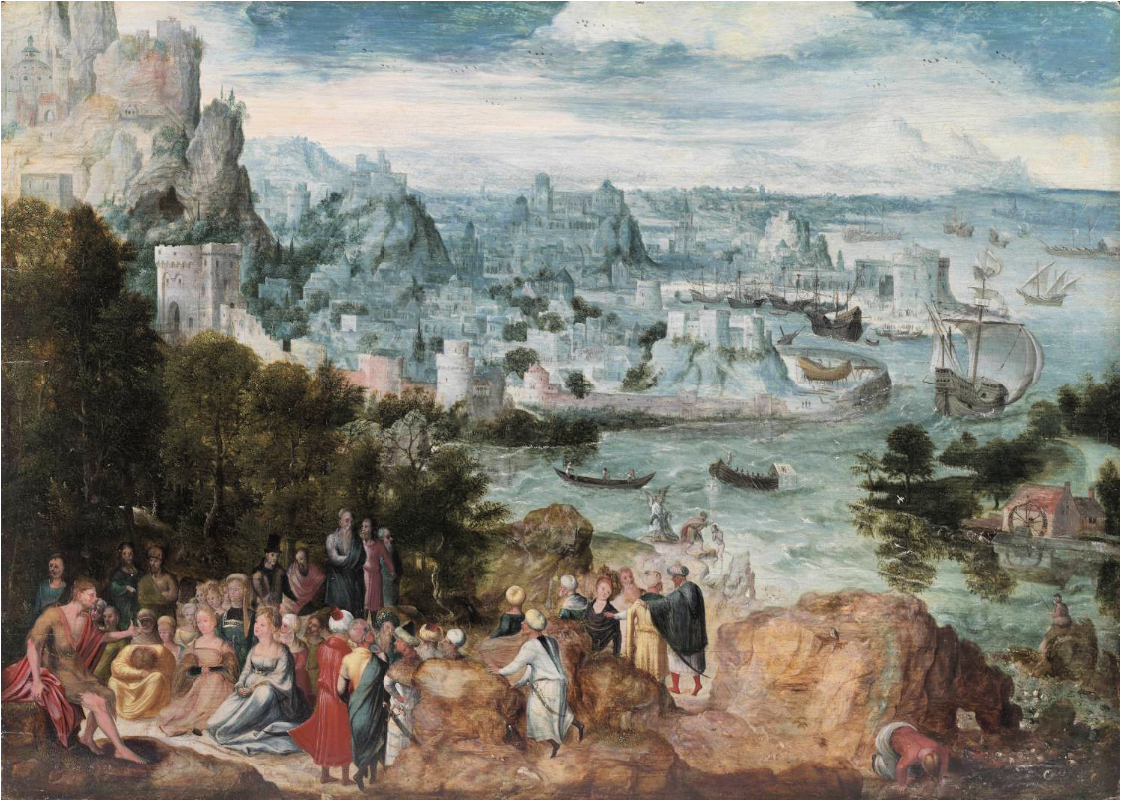 The Preaching of St. John the Baptist (c. 1540), 29.8 cm x 41.9 cm, Cleveland Museum of Art, Cleveland, Ohio
The Preaching of St. John the Baptist (c. 1540), 29.8 cm x 41.9 cm, Cleveland Museum of Art, Cleveland, Ohio
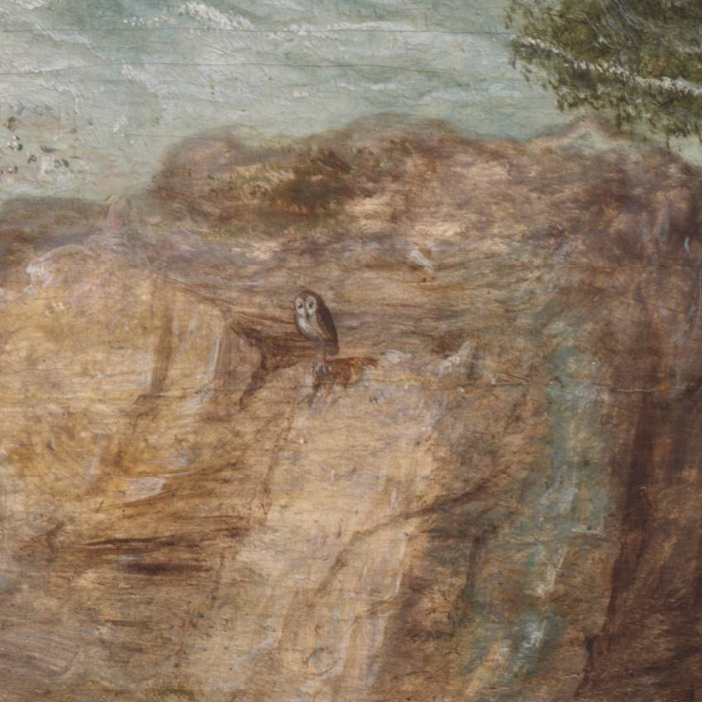
“A moral symbol of vision or blindness, of Christian light or the heretical rejection of that light, of illusory appearances, of the secret and the hidden, encouragement to be open to moral truths and to search for concealed meaning in the Scriptures: in his landscapes, Bles exploits all the semantic richness of the owl.”7
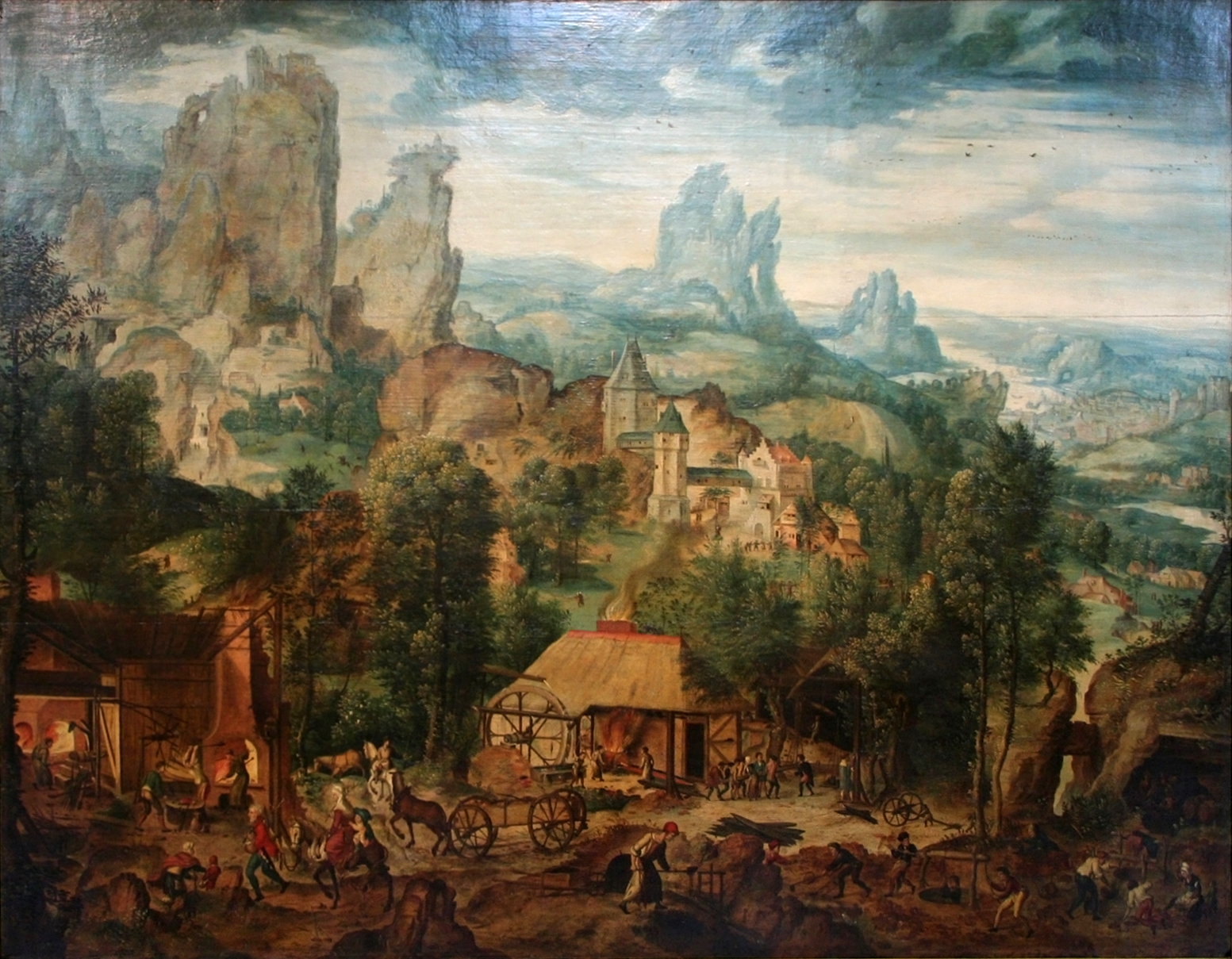 Landscape with Mines / The Copper Mine (c. 1540), 83 cm x 114 cm, Uffizi Gallery, Florence, Italy
Landscape with Mines / The Copper Mine (c. 1540), 83 cm x 114 cm, Uffizi Gallery, Florence, Italy
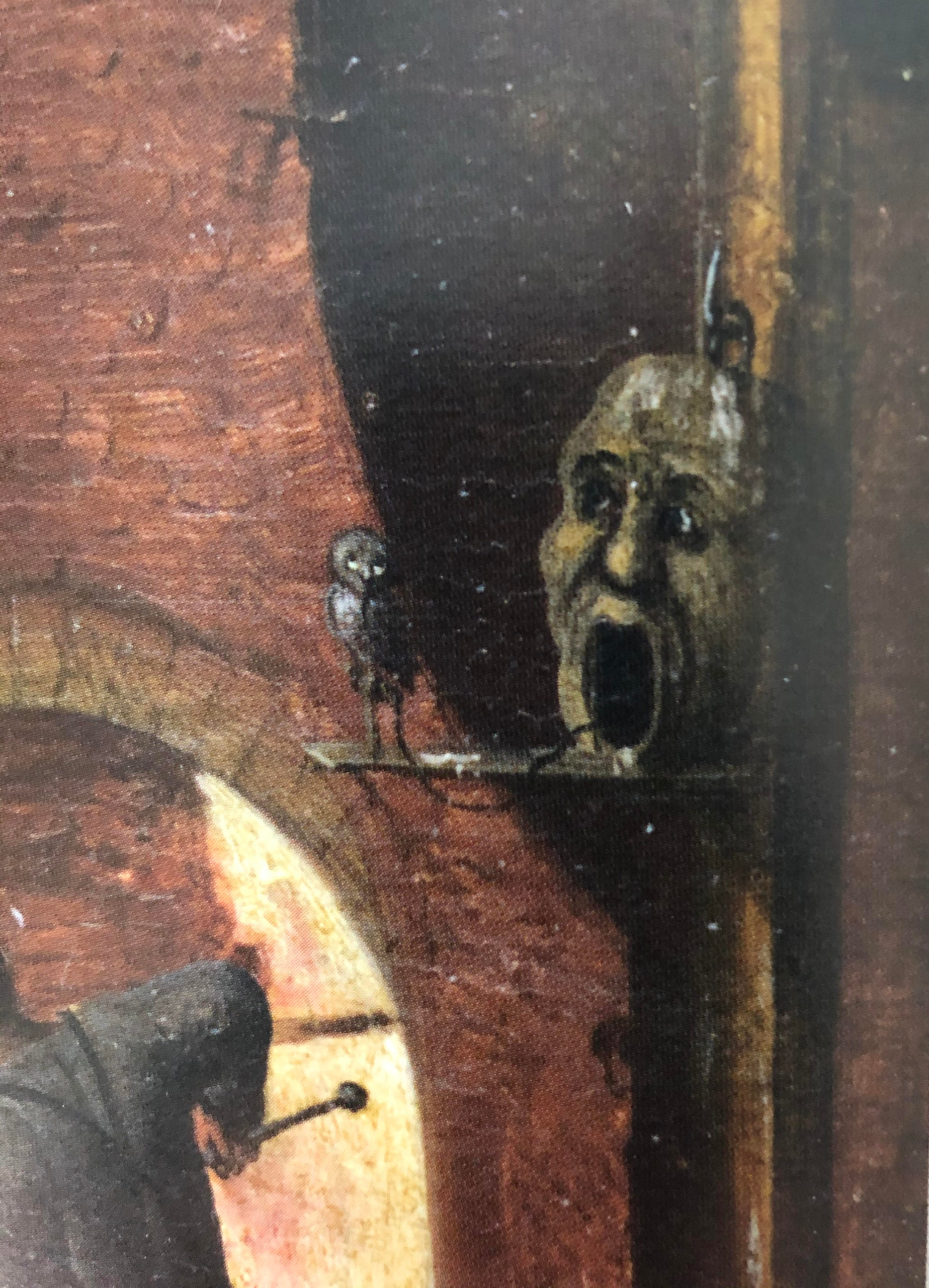
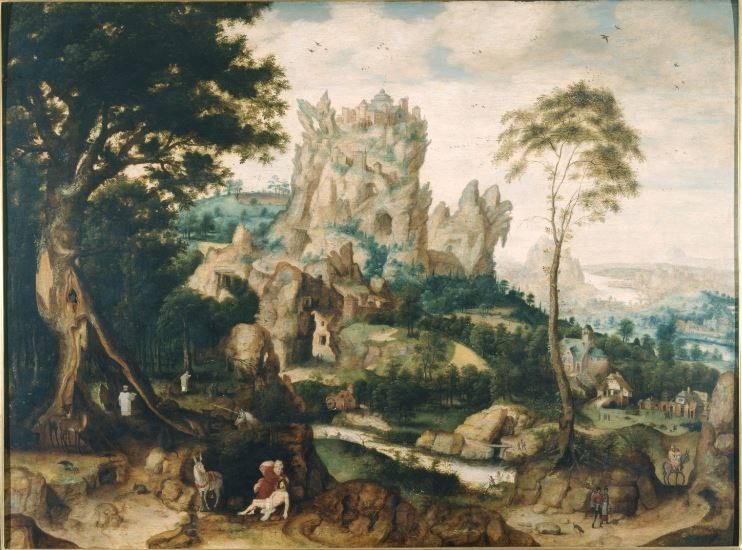 The Good Samaritan (date unknown), 84.1 cm x 113.4 cm, Musée Provincial des Arts Anciens Namurois, Namur, Belgium
The Good Samaritan (date unknown), 84.1 cm x 113.4 cm, Musée Provincial des Arts Anciens Namurois, Namur, Belgium
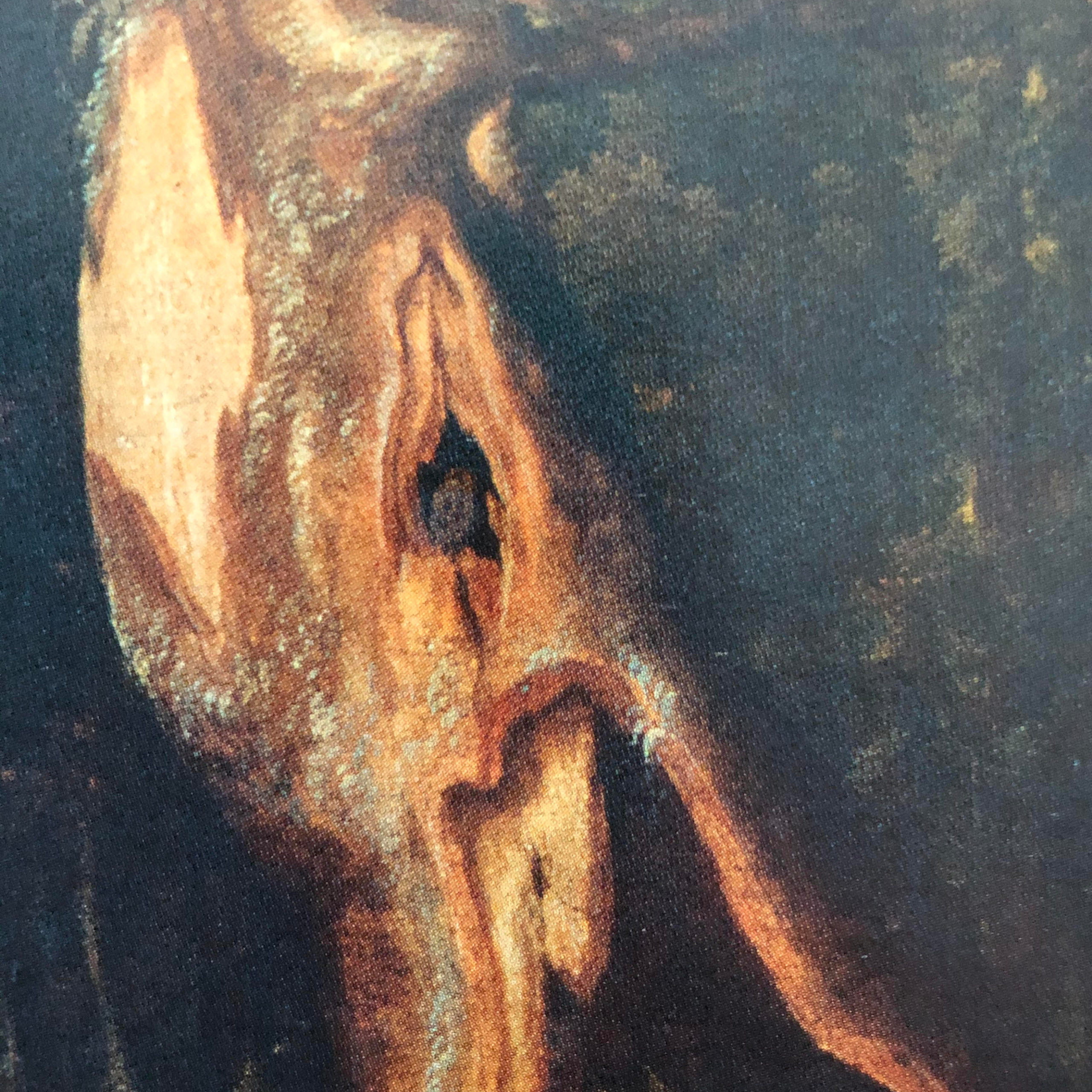
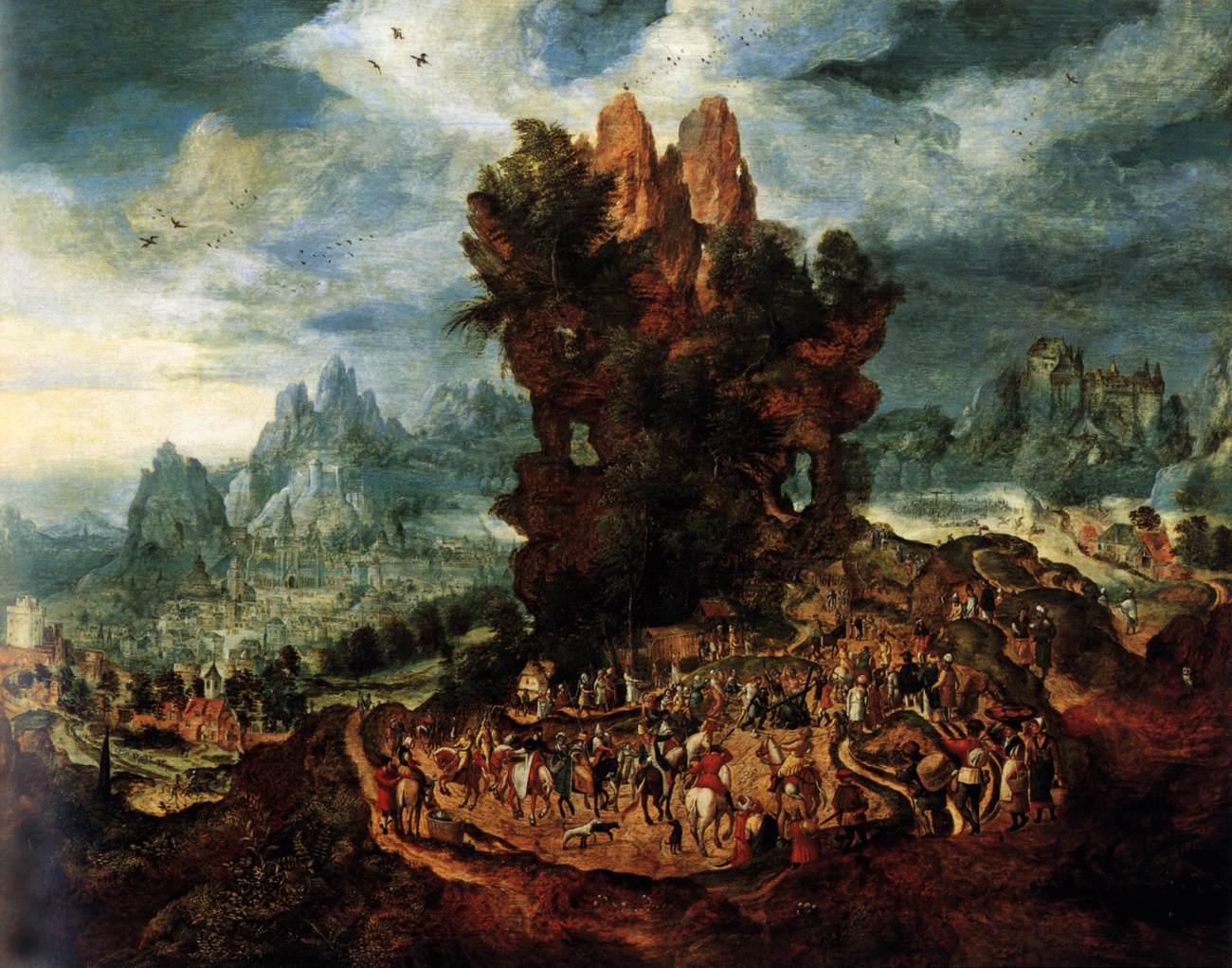
The Road to Calvary (c. 1540), 52 cm x 72 cm, Gemäldegalerie der Akademie der bildenden Künste, Vienna, Austria

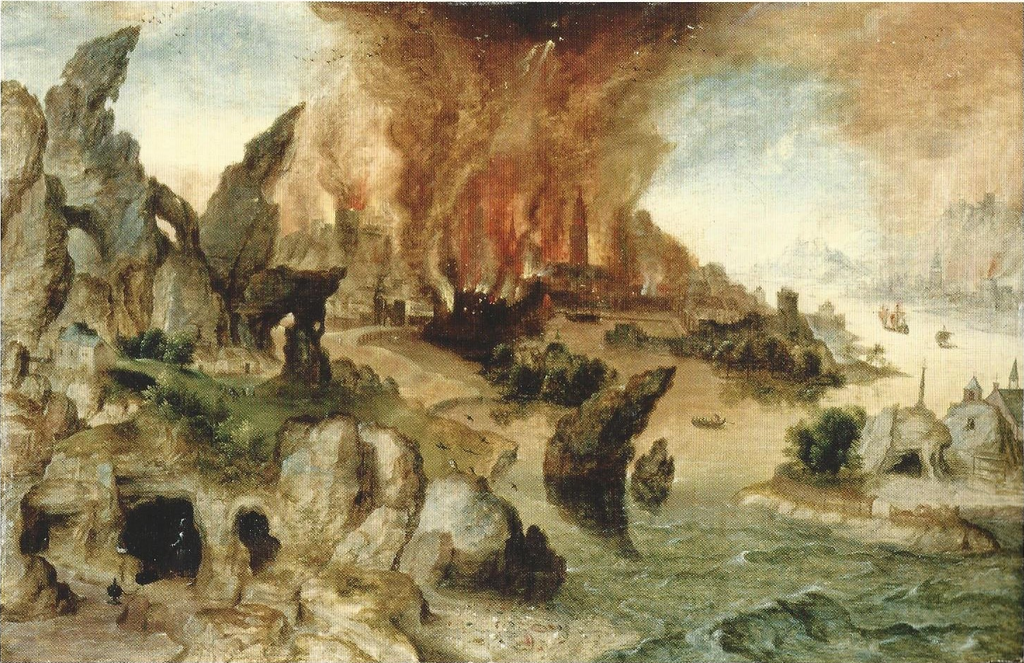 The Burning of Sodom (c. 1540), 26 cm x 40 cm, Musée Provincial des Arts Anciens Namurois, Namur, Belgium
The Burning of Sodom (c. 1540), 26 cm x 40 cm, Musée Provincial des Arts Anciens Namurois, Namur, Belgium
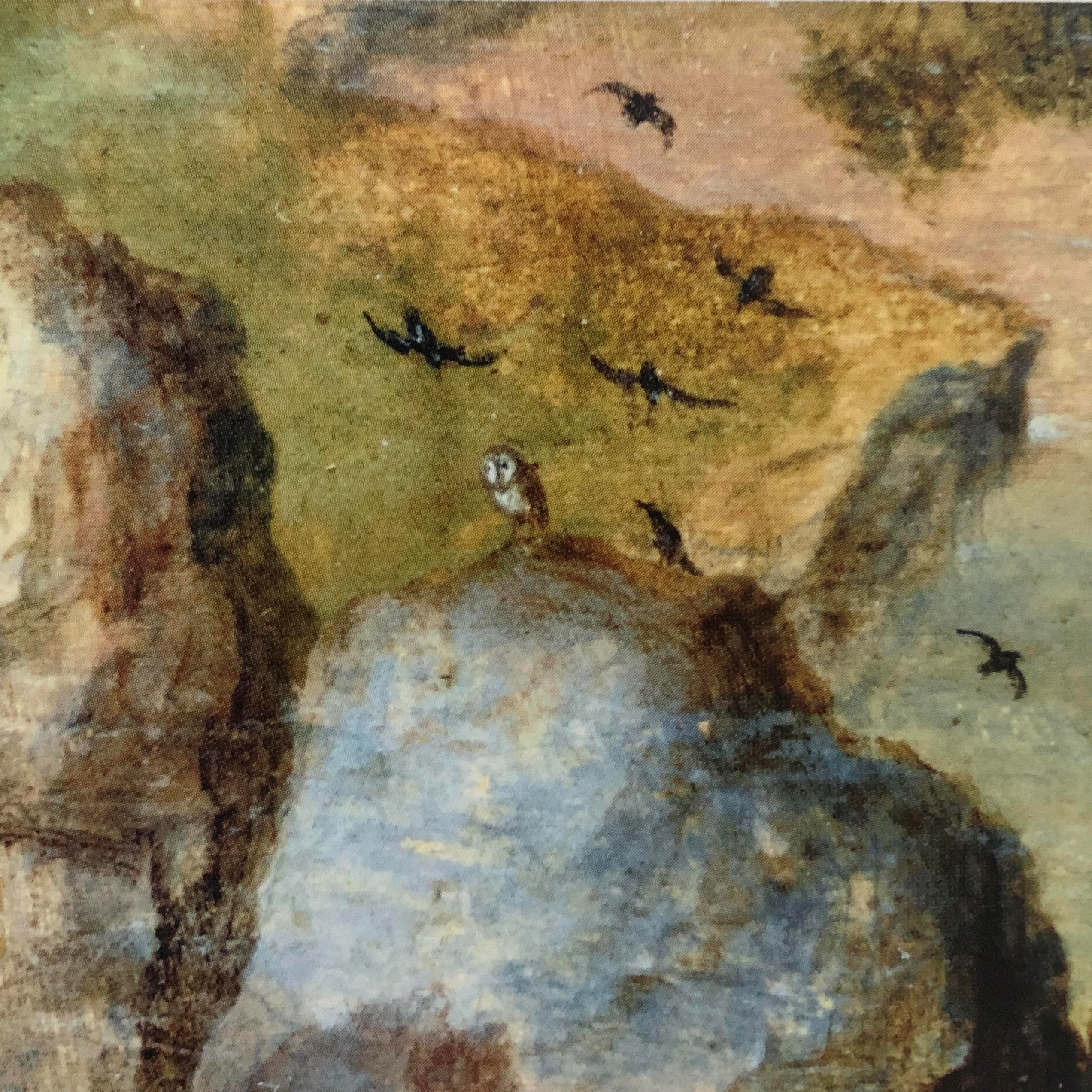
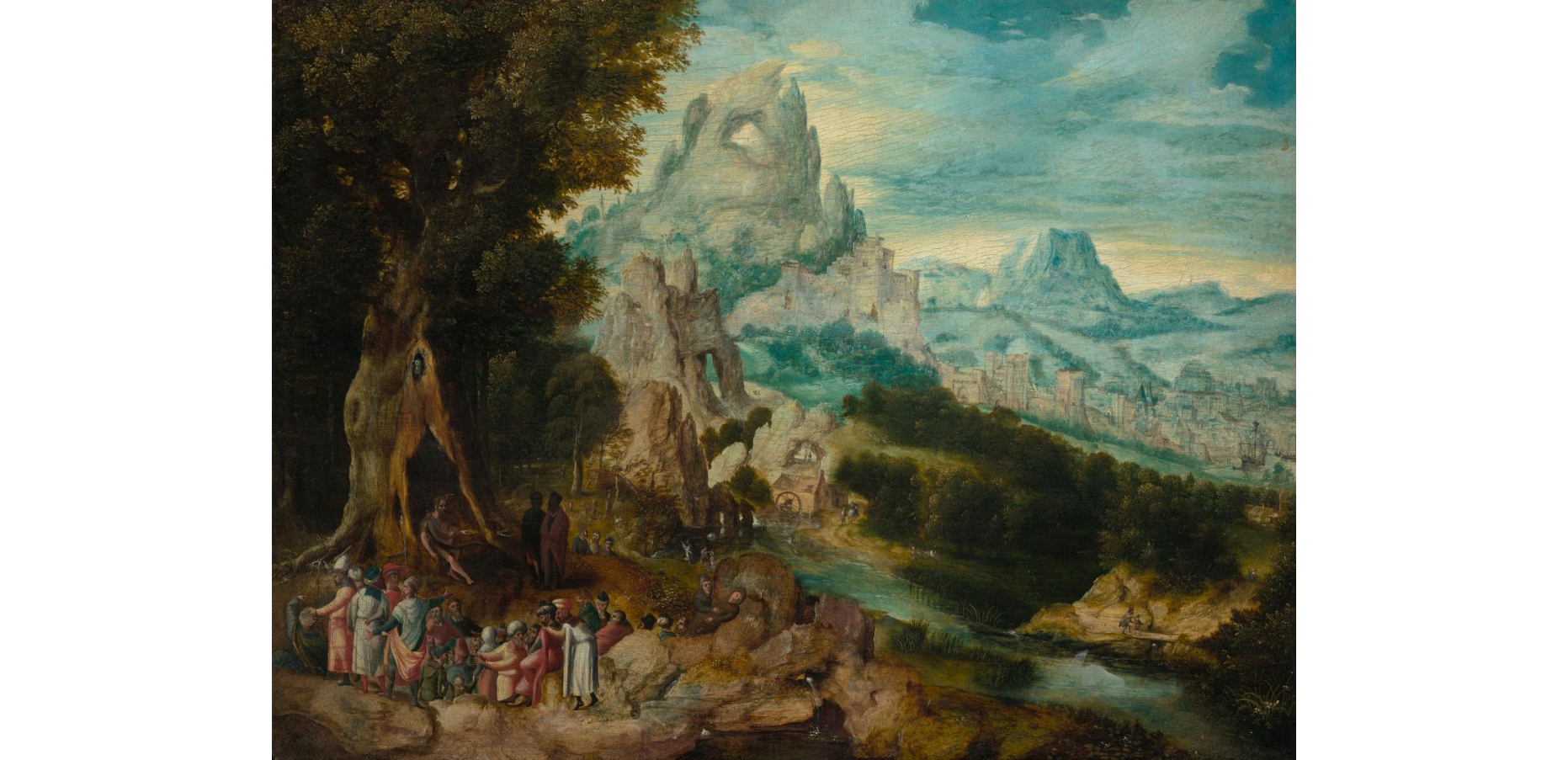 The Preaching of John the Baptist (c. 1535-40), 29 cm x 39 cm, Kunsthistorisches Museum, Vienna, Austria
The Preaching of John the Baptist (c. 1535-40), 29 cm x 39 cm, Kunsthistorisches Museum, Vienna, Austria
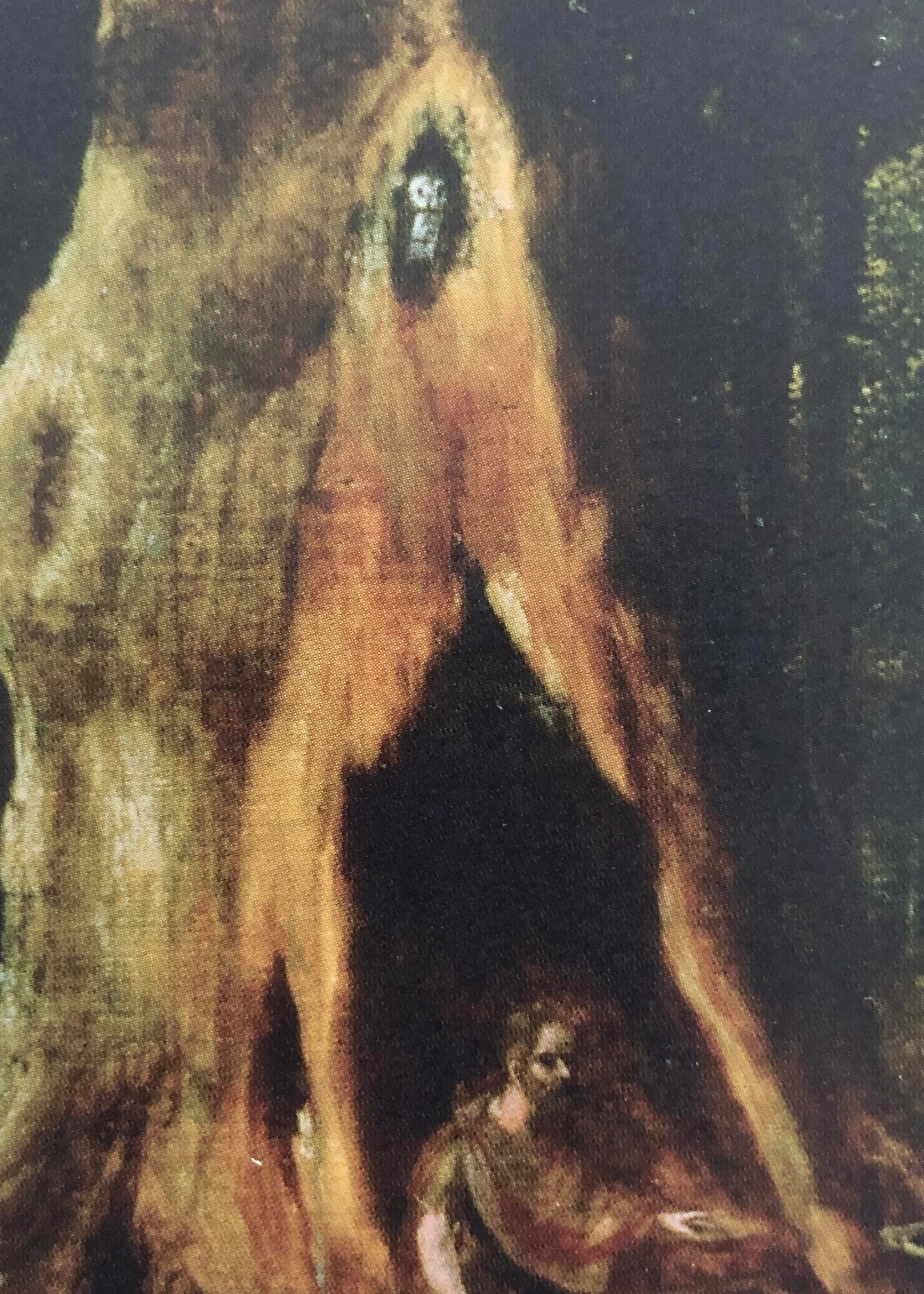
 The Flight to Egypt (date unknown), 36 cm x 57 cm, Statens Museum for Kunst, Copenhagen, Denmark
The Flight to Egypt (date unknown), 36 cm x 57 cm, Statens Museum for Kunst, Copenhagen, Denmark
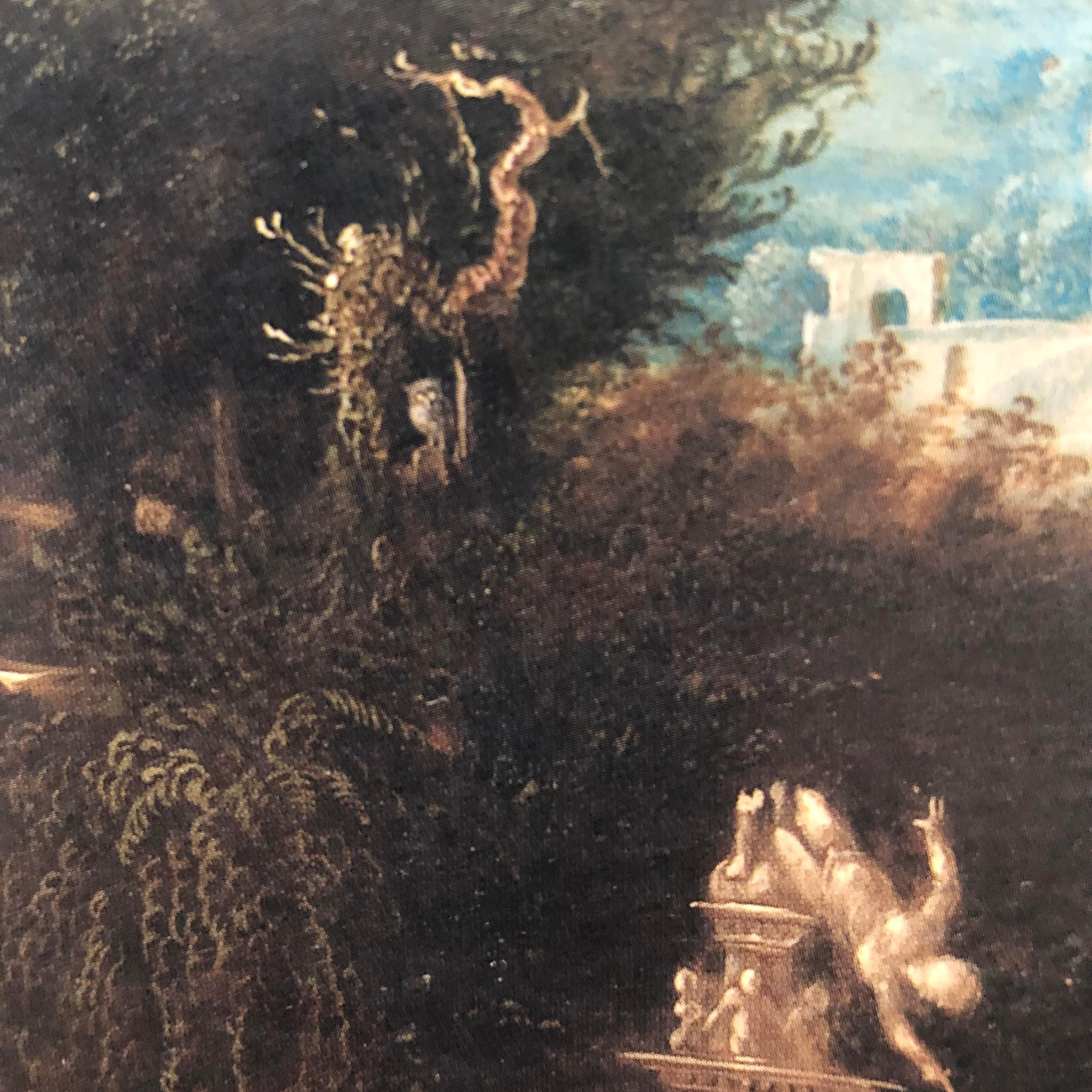
There are many more Bles paintings that contain owls, but it’s hard to see the small birds in reproductions. For example, an owl apparently sits in a window in one of the buildings in the background of the painting below, but it’s almost impossible to see, even when looking at the actual painting.
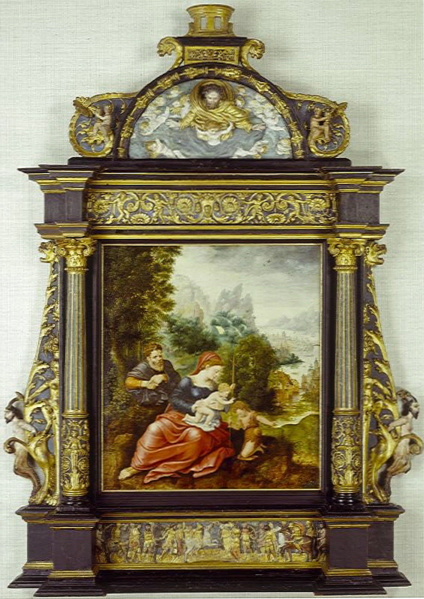 The Holy Family with the Infant St. John the Baptist (date unknown), 60 cm x 53 cm, Kunstmuseum Basel, Switzerland
The Holy Family with the Infant St. John the Baptist (date unknown), 60 cm x 53 cm, Kunstmuseum Basel, Switzerland
If you have a chance to inspect a Herri met de Bles painting and find another owl, please comment.
Artist: Herri met de Bles (c.1510-after 1550)
Online Information:
Devisscher, Hans, “Bles [Blesio, Blesius, Blessio; de Dinant, de Patinir], Herri met de [Henri, Henrico; Herry (met de)] [Civetta]” Grove Art Online, Oxford University Press.
RDK Netherlands Institute for Art History.
Wieseman, M.E., Herri met de Bles, Landscape with the Conversion of Saul on the Road to Damascus, Allen Memorial Art Museum, Oberlin College.
Other Information / Sources:
From Van Eyck to Bruegel – Early Netherlandish Painting in the Metropolitan Museum of Art, Maryan Wynn Ainsworth and Keith Christiansen, eds., New York: Metropolitan Museum of Art, 1998.
Herri Met de Bles – Studies and Explorations of the World Landscape Tradition, Normal E. Muller, Betsy J. Rosasco, and James H. Marrow, eds., The Art Museum, Princeton University in collaboration with Brepols Publishers, Turnhout, Belgium, 1998.
Weemans, Michel, Herri met de Bles – Les Ruses du Paysage au temps de Brueghel et d’ Erasme, Paris: Editions Hazan, 2013.
- Robert A. Koch, A Rediscovered Painting: The Road to Calvary by Herri met de Bles, p. 20, n.1. Some historians believe Bles was actually Herry de Patinir, who was a master of the Antwerp Guild of St. Luke in 1535.
- Weemans 92-93.
- Karel van Mander, The Lives of the Illustrious Netherlandish and German Painters, ed. and trans. Hessel Miedema, Doornspijk, 1994, pp. 136-37 (fol. 219v), cited in The Road to Calvary by Herri met de Bles: An Appreciation, by Betsy Rosasco; Muller p. 6 n. 13.
- Herri met de Bles, Princeton, p. 3.
- Ainsworth, pp.256-7.
- Weemans 52.
- Weemans 52.
 SECRET IMAGES
SECRET IMAGES
Leave a Reply